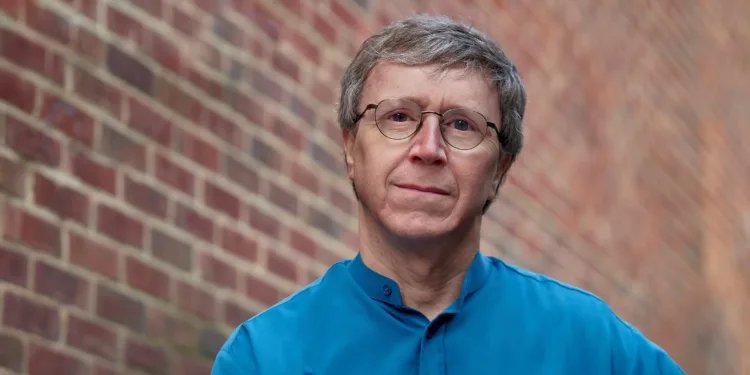By Chris Thomason, Author of ‘Freaky Thinking; Thinking that delivers a dazzling difference’
Creative thinking can be trickier to tap into as life becomes more serious. When we were little kids, the inside of a loo roll could be a pirate spyglass, or a trumpet, or a false nose, or a tunnel for toy cars. But the chances are, those cardboard tubes are now just recycling. Creative thinking can be hard for grownups.
But we can train ourselves to be better creative thinkers. Here are a few tips based on Freaky Thinking, a process that boosts a person’s preferred way of thinking to help the creative process become second nature.
-
Find a repeatable process
Great thinking and new ideas don’t just happen. You must actively work your imagination to force useful, creative thoughts out. And to do this, you need a process that not only works well for you but is also easily repeatable and permits flexibility. Without a process, you only have a semi-random set of events, which makes it harder to monitor if you are being successful or not. Committing to finding that process is the first step.
-
Find where you think best
Creative thinking can take place anywhere, at any time, but some places and times are better than others. One of the most challenging locations is at a desk or table with a notepad and pen in front of you. Research has proven that performing some kind of undemanding task produces better thinking. This could be walking the dog, washing dishes, even taking a bath or shower. It needs to be a light activity that doesn’t occupy you completely. Try out different activities to find your personal sweet spot.
-
Find when you think best
Roald Dahl wrote for two hours in the morning, and two hours in the afternoon, with a very, very long lunch break in between. When writing Harry Potter, JK Rowling would write from 9am to 3pm. There are morning people and there are evening people (and there was Franz Kafka who would do his best writing from 11pm through the night to 6am). Finding the best time for you is key to accessing your most creative thinking. There’s no point trying to do good thinking when you’re feeling tired (no matter how much you may admire Kafka). If you want to do powerful thinking, save it for the time of day when you believe you are at your most creative.
-
Recognise that your optimal time is precious
If you want to do your best thinking, try to combine your optimal time and place together. If it’s in the morning rather than in the evening, and walking the dog is a useful activity, then volunteer to take the early shift. Book this peak-thinking time in your calendar each day and use it as your thinking self-development time. Re-organise, schedule, or negotiate as appropriate to ensure you have regular access to your best creative thinking time/activity.
-
Choose where to focus
You need to have a focus for your thinking on the topic you want to address. This is called your killer question. This is an important, enduring question that hasn’t yet been answered well enough, and which will deliver significant value for you. If a killer question is too big and over-encompassing to be tackled in one go, chunk it down into component parts, and think about these individually. When you have ideas that address each part, integrate them together to form overall solutions to your killer question.
-
Incubate your ideas for later
Everyone will have experienced the situation where a small fact or detail can’t be recalled, like the title of a song or the name of someone you used to live next door to. Frequently, when we give up and forget about remembering the detail, after a time (could be minutes or hours), the answer suddenly comes to us unbidden. This is our subconscious mind working on our unresolved issue in the background.
A similar thing happens when you are working on a killer question. Even when you’re not actively thinking about the topic, your subconscious is working on it for you. Each time you come back to the question or task, your subconscious has advanced your thinking by finding a new perspective to consider, or reinterpreting an element of it in some way. Each gap in your thinking encourages subconscious incubation – use this to great effect on your issue (Roald Dahl’s long lunch breaks likely did more than fill his tummy).
-
Find your Win Quicklies
Win Quicklies are ideas—or elements of your bigger idea—that can swiftly test or prove an interesting part of your solution. A win quickly can be a useful proof that something much larger has the potential for success and value. It may be the case that a number of Win Quicklies are actually more beneficial that implementing one bigger, slower-moving project. But even when that’s not the case, nothing boosts our confidence more than seeing one of our ideas delivering value.
-
Remember how to eat an elephant – one bite at a time
In Mark Manson’s book Will, actor Will Smith credits his success as a Hollywood superstar to lessons from his father, who told him and his brother to build a long brick wall. His father said, “There is no wall. There are only bricks. Your job is to lay this brick perfectly. Then move on to the next brick. Then lay that brick perfectly. Then the next one. Don’t be worrying about no wall. Your only concern is one brick.” Your thinking exercises will be far more exciting than laying bricks, yet the same principle applies. Consistency of use will eventually build your wall of success. Just take it one brick at a time.
-
Boost creative confidence
Recipes for success can vary—different people need different ingredients—but a common component is a belief in our ability to attain a desired level of performance, and in relation to creative thinking, this is often referred to as creative confidence. The greater the creative confidence, the easier it is to learn and perform a new task, and the easier it is to persevere through to success. The more we apply our thinking process, the better results we achieve, which makes us more confident to pose harder killer questions. This, in turn, requires us to apply the process more-effectively which helps us achieve better outcomes, and so the cycle goes on indefinitely.
-
Choose excellence situations
While athletes do continuous fitness training, they don’t try to break their personal best record every day. They only attempt this on specific, optimal occasions – and it’s a similar situation with our creative thinking. Decide which issues you face that are worthy of additional thinking effort and time to push out some exceptional new ideas. You can’t be excellent all the time, so choose the situations or occasions where you want to excel.

ABOUT THE AUTHOR
Chris Thomason is the author of Freaky Thinking, a process that helps individuals in organisations to think differently about important topics and issues. Chris is founder of Ingenious Growth which helps organisations change their thinking to boost innovation, productivity, profits and most importantly, staff satisfaction. After buying a failing manufacturing company and turning it into one of the largest in its sector, Chris now teaches the innovative ways of thinking that lead to his business success. Chris is author of eight business books including The Idea Generator, Freaky Thinking, and Excellence in Freaky Thinking. Chris’s clients include UPS, Canon, O2, Vodafone, Roche Pharmaceuticals, Touchnote, Lloyds Bank, Toyota, HSBC, Scottish Widows, South African Airways, American Express, and many more.










